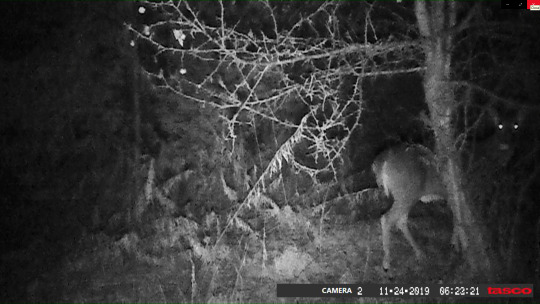🌲 canadian outdoorsman 🌲 follow for fish, tree, plant, and bird identification tips and information 🌲 all photos are mine 🌲
Don't wanna be here? Send us removal request.
Text



Not yet winter, but who can complain about it when the morning is this beautiful?
25 notes
·
View notes
Video
tumblr
First time I’ve seen White-breasted Nuthatches out back! I spotted a pair but only caught one of them on video. Video quality, as usual, is lacking but you can hear their cute little calls!
5 notes
·
View notes
Text
My female Hairy Woodpecker wasn't super happy about my presence today but I'm happy I got this close! At first glance Downy and Hairy Woodpeckers can look identical, and correctly identifying which you have comes down to size and proportions: Hairy Woodpeckers are larger and their beaks are about as long as their heads, while Downy Woodpeckers have much shorter beaks. Males and females can be differentiated easily, as males of both species have a red patch on the back of their head.
2 notes
·
View notes
Video
vimeo
This is my resident female downy woodpecker! She doesn’t seem to mind my company much, maybe because she knows I’m the one supplying peanuts.
16 notes
·
View notes
Photo




Saw my usual winter birds this morning: American Crows, Canada Geese, Mallards, Black-Capped Chickadees, American Tree Sparrows, & Northern Cardinals. More exciting was all the dead salmon! I didn’t see any running this autumn, despite being in the creek all the time. I couldn’t tell you which salmon they are at this stage, but Coho, Pink, Chinook, and Atlantic salmon all spawn throughout late summer & autumn in the Great Lakes.
#logan's log#animal death#tw animal death#i figure not all of you will wanna see this#fish#salmon#nature
2 notes
·
View notes
Photo


Some trail cam snapshots! There are at least two out back who’ve woven paths between the old apple trees. I’m hoping to get a video of them together.
11 notes
·
View notes
Text



Not yet winter, but who can complain about it when the morning is this beautiful?
25 notes
·
View notes
Text

Stay Gold 🌲
Species: Tamarack (Larix laricina), aka American Larch, Eastern Larch, Alaska Larch, Juniper, & Hackmatack
An outlier among conifers, members of the larch family shed their needles each fall. Tamarack is found across most of Canada and in Alaska, the American Midwest, and parts of the American Northeast. This species prefers habitats with wet soil such as bogs, swamps, riverbanks, and lakeshores.
Identification: needles occur in tufts and are soft to the touch. Tamarack has very small cones measuring 1-2cm long. Bark of mature trees is a purplish-brown and flakes into scales.
10 notes
·
View notes